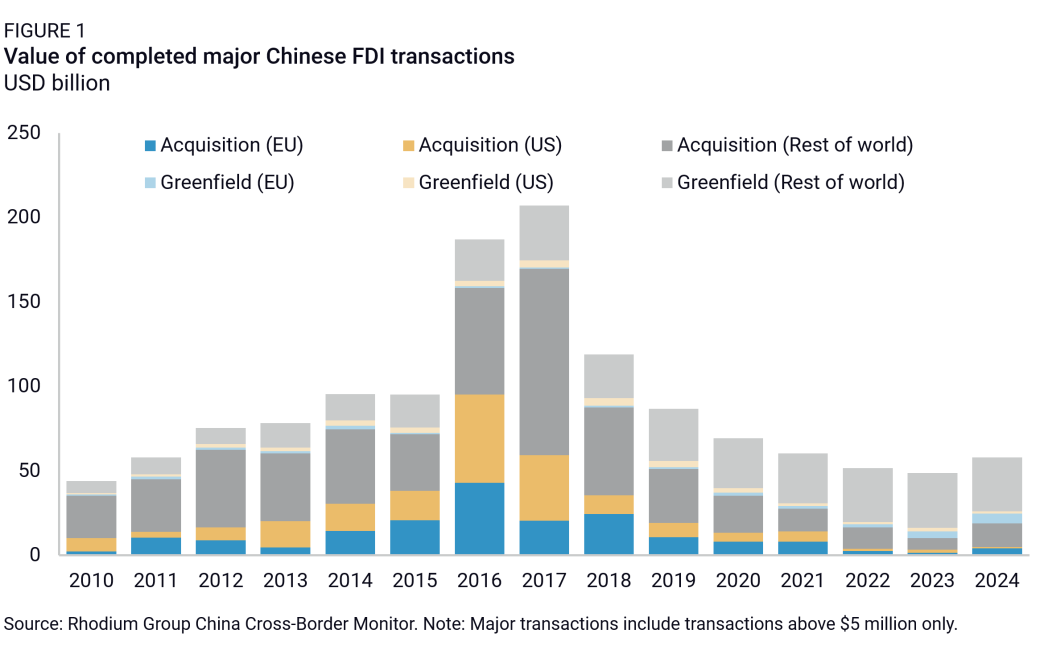The Clawback: Reclaiming Strategic Assets from China
The United States is on an unspoken mission to claw back strategic assets from China.
The United States is on an unspoken mission to claw back strategic assets from China.

The United States is on an unspoken mission to claw back strategic assets from China. This is not a policy that began with the current US administration, nor has it been articulated in a speech or policy document. Instead, this is a pattern of observed behavior driven by growing US anxiety over growing dependencies on China in critical industries and infrastructure. Of course, the urgency to diversify away from China in sensitive sectors is not just a US phenomenon: Partner countries are working toward a similar goal, but their tactics will be subtler than their American counterparts and may still leave a door open for (conditional) Chinese investment. As the clawback becomes more visible in the coming months and years, expect Beijing to push back with tighter restrictions on outbound investment as it tries to hold onto prized assets from a decade-long M&A spree.
While there is a growing consensus in Washington that dependencies on China for critical goods and infrastructure constitute a major national security risk, the task of unwinding them has proven vexing. Tariffs or outright bans on China-origin products, from critical minerals to wireless routers, still requires time for other companies to fill the void and bring new production online, all while trying to remain cost-competitive amid rising trade uncertainty. But there is also a swifter path to resolving the dependency dilemma: the clawback, which we define as using various policy instruments to make it untenable for a strategic asset to remain under Chinese ownership on national security grounds. We have observed a collection of signals over the past year that indicate the clawback is taking shape, not just in the US, but also in partner countries that share similar anxieties over the presence of Chinese companies in strategic industries.
The clawback story is rooted in remorse. China’s global outbound investment saw rapid growth in the 2010s as Chinese firms—largely shielded from the worst effects of the global financial crisis—looked to new markets to expand and diversify. Companies were hungry for capital and geopolitical disruptions were waved off by investors as tail risks. When Beijing loosened restrictions on outward FDI in 2014, Chinese investment reached record highs of $200 billion in 2016 with an explosion of large-scale M&A deals. The bulk of China’s investment flows went toward acquisitions in developed markets in the US and Europe. But there are scores of transactions that took place during this period that would have had little chance of making it past national security filters in today’s geopolitical climate.

Such “big regret” deals include Chinese biotech giant BGI’s acquisition of US DNA-sequencing startup Complete Genomics in 2013, Hong-Kong conglomerate WH Group’s acquisition of US pork producer and food-processing giant Smithfield Foods in 2013, Chinese firm Midea’s acquisition of German robotics industry leader Kuka AG in 2016, the acquisition of Dutch legacy chip manufacturer Nexperia by a consortium of Chinese investors in 2017, and the ChemChina acquisition of Swiss agricultural technology firm Syngenta in 2017, among others.
Rebuilding an industrial base and reorganizing global trade is hard. The US is bound to seek out shortcuts in response to growing urgency to diversify away from China in critical sectors. As the US works to create ex-China technology and trade blocs, it will naturally be tempted by assets that once belonged to a network of trusted allies, or even by Chinese-owned assets that have become dominant in certain sectors of the US economy much to Washington’s regret. These are prime targets for policies aimed at rebuilding supply chain resilience and technological competitiveness at full tilt.

The United States is on an unspoken mission to claw back strategic assets from China.
Read the full note on the Rhodium Group website